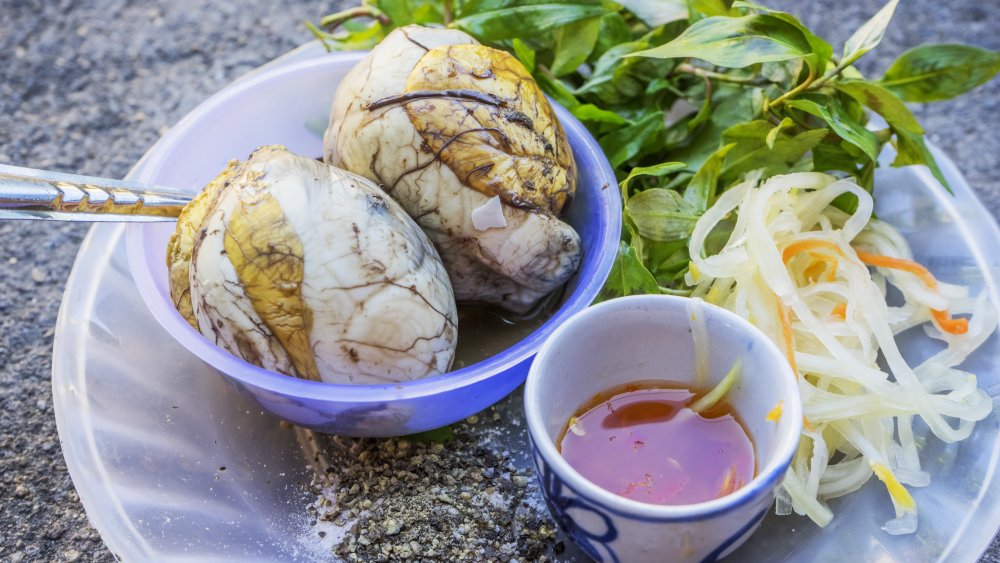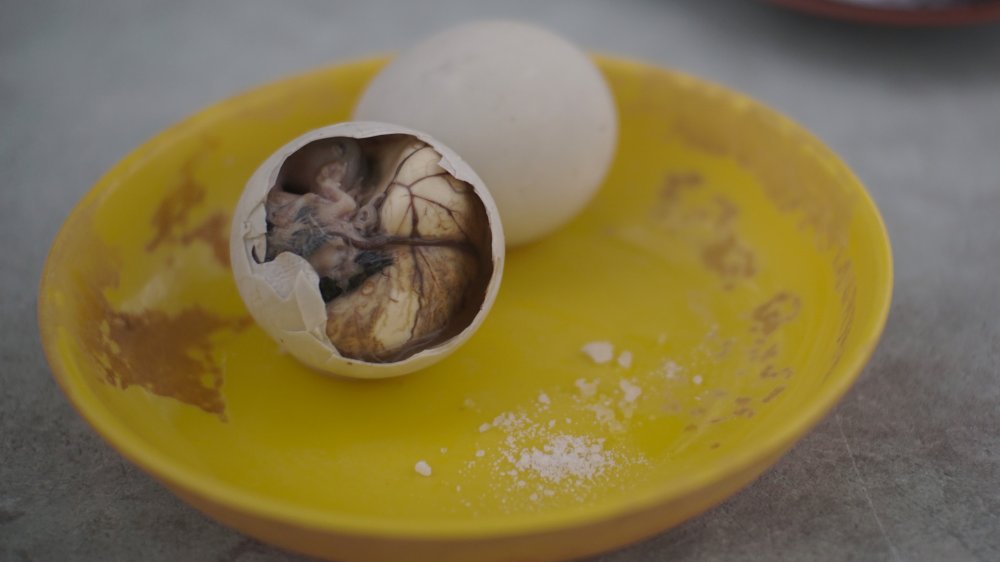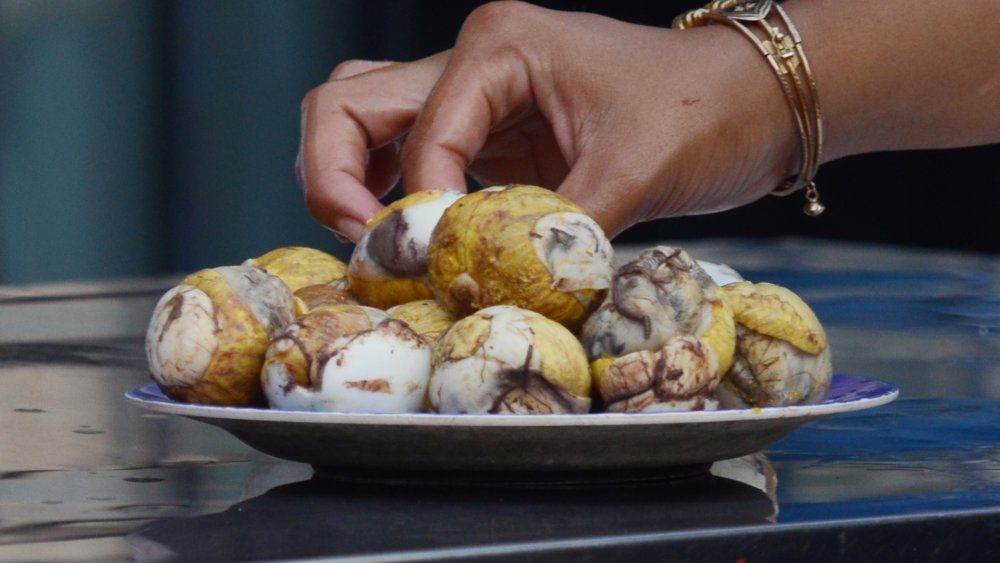The Reason Balut Is Considered A Delicacy
Every food culture around the world is bound to have one dish that makes a diner wonder what it is he or she might have gotten themselves into by ordering said dish in the first place. In Indonesia, its kopi luwak, or coffee made with droppings of civet cats who feast on prime coffee beans. Norway makes diners do a double take when they serve smalahove, a lamb's head split in half with an axe. And then there is hakarl, fermented Icelandic shark which the late Anthony Bourdain called the "single worst thing I've ever put in my mouth" (via Mental Floss).
On that note, it's good to know that there are other delicacies out there that will dare a diner as much as balut does. While balut is well-known (and well-loved) in Southeast Asian cuisines like the Philippines, Vietnam, and Cambodia, the idea of downing a fertilized duck egg actually came from China, whose emigrants first brought the exotic dish to the Philippines.
Why exactly is balut?
Balut begins as a fertilized duck egg, which is incubated for between two to three weeks, then boiled. It is the perfect dare food, since what can be more disgusting (for some people) than the thought of consuming a pre-chick duck with a bit of crunch (its beak), and which comes with a tasty yolk and a mouthwatering broth, which Nextshark says used to be the embryonic fluid. Fans rave about how different textures and flavors can be enjoyed with just one bite, and it is truly considered a delicacy of the Philippines for that reason.
If that all sounds too much for you, there is a milder version of balut, known as penoy — that egg is a failed balut, and is made entirely out of yolk, which should please folks that get a kick out of the milky-tasting yolk but don't particularly care for the duck embryo that makes balut the memorable dish that it is.
There's more to balut than meets the eye
Balut fulfills different roles in Philippine society. Noted food writer Doreen Fernandez says men consider the delicacy to be an aphrodisiac, or at the very least a source of strength and stamina, which is why it is sold at night through early morning (via The Margins). Balut has also apparently picked a side in that country's bedroom wars, because if women consume balut while they are pregnant with girls, they can expect to have offspring with hairy legs (via Philippines Plus).
Balut has a role in the classroom, too. Because one egg has 188 calories, 13.7 grams of protein, 14.2 grams of fat, 116 milligrams of calcium, 2.1 milligrams of iron, it's also considered to be a highly nutritious superfood, making Filipino parents believe balut is good for the brain. So if a Filipino student has a test lined up — no matter what time of day it happens to be — he or she (if she isn't pregnant, that is), should head straight for one of the balut vendors stationed outside colleges and universities for a power boost.
But too much balut can be bad too... consuming vast quantities of the delicacy could turn the diner into a bloodthirsty monster known as the aswang — at least that's what Filipino lore says anyway.


